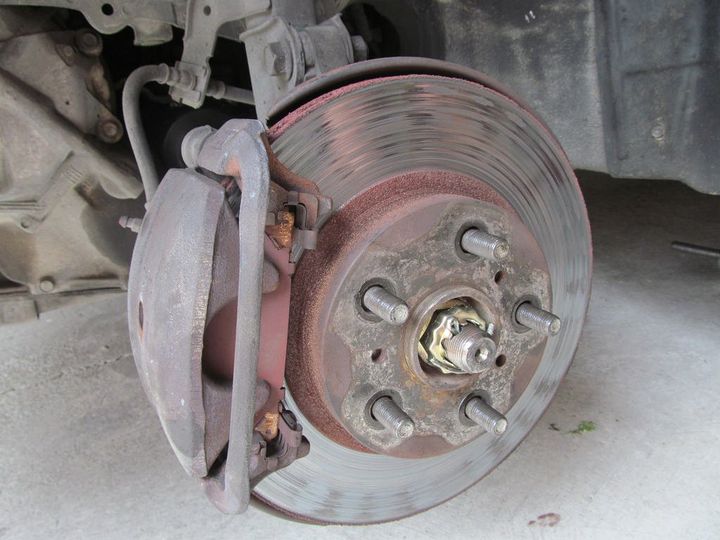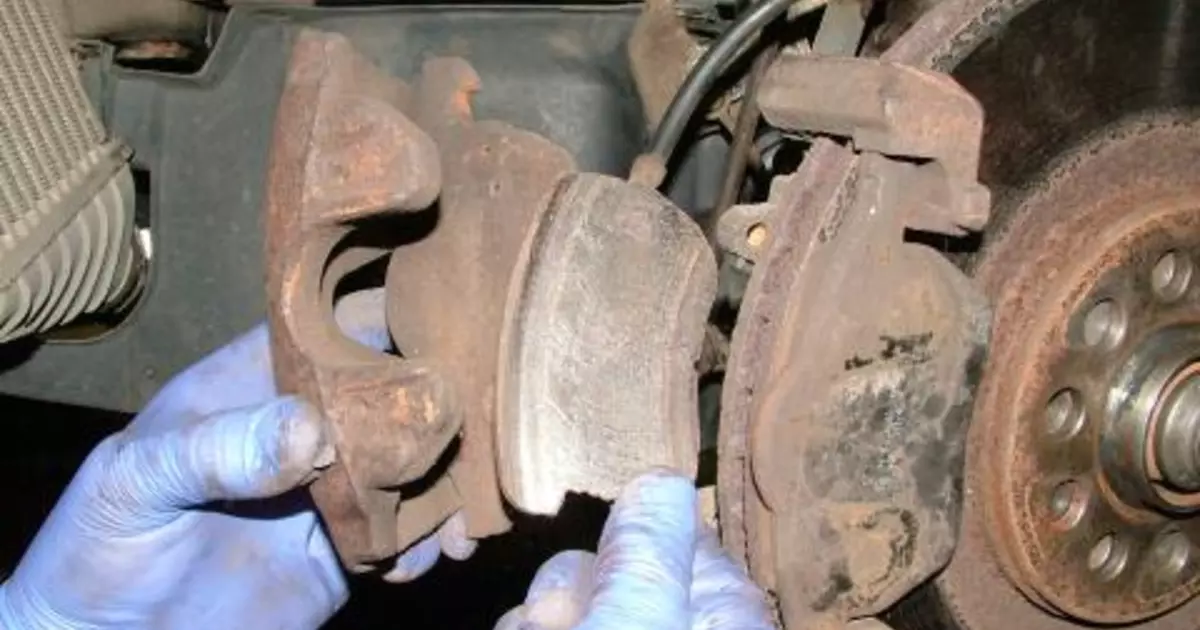


Brake calipers are a crucial component of a vehicle's braking system, responsible for applying pressure to the brake pads and slowing down or stopping the vehicle. When a brake caliper becomes seized or stuck, it can lead to various issues, including reduced braking performance, uneven brake pad wear, and potential safety hazards. Recognizing the signs of a stuck brake caliper is essential for timely diagnosis and repair.

Brake calipers are subjected to harsh environments, temperature fluctuations, and constant exposure to road debris, making them susceptible to various issues that can lead to seizing. Let's delve deeper into the main culprits:
| Corrosion Causes | Effects |
|---|---|
| Moisture exposure | Rust and deterioration of caliper components |
| Salt exposure (coastal areas, winter roads) | Accelerated corrosion and seizing |
| Contaminant exposure (dirt, debris) | Abrasion and damage to seals and sliding surfaces |
Moisture, salt, and contaminants are the sworn enemies of brake calipers. Over time, these elements can cause corrosion on the caliper piston, pins, and sliding surfaces, leading to sticking and eventual seizing. I've seen countless cases where calipers have been rendered immobile due to severe corrosion, especially in coastal areas or regions with harsh winters. The corrosion can cause rust and deterioration of the caliper components, leading to seizure and failure.
Caliper sliding pins and bushings require regular lubrication to ensure smooth operation. Neglecting this crucial maintenance step can result in these components becoming stuck, causing the caliper to seize. It's a common issue I encounter, particularly in high-mileage vehicles or those with infrequent brake service.
Sliding pins and bushings rely on lubrication for smooth movement
Lack of lubrication leads to increased friction and wear
Over time, the components can become stuck, causing the caliper to seize
The rubber seals and boots play a vital role in protecting the caliper's internal components from contaminants. When these seals or boots are damaged or worn out, debris can enter and wreak havoc, causing the piston or sliding components to seize. This issue is often overlooked during routine maintenance, leading to costly repairs down the line.
Seals and boots protect internal caliper components from contaminants
Damaged or worn seals/boots allow debris entry
Debris can cause piston or sliding components to seize
If a vehicle is left unused for an extended period, the brake components can fall victim to corrosion or seizing due to lack of movement and lubrication. I've seen this scenario play out with vehicles that have been sitting idle for months or even years, requiring extensive brake system overhauls.
Prolonged inactivity leads to lack of component movement
Lack of movement and lubrication can cause corrosion and seizing
Vehicles left unused for extended periods are at higher risk
As a mechanic, diagnosing a seized caliper is a combination of visual inspection and observing the vehicle's behavior. Here are the telltale signs I look for:
| Inspection Point | Potential Issue |
|---|---|
| Uneven brake pad wear | Caliper not sliding properly |
| Sticking sliding pins | Impending caliper seizure |
| Fluid leaks or damaged seals/boots | Contamination or debris entry |
| Corrosion or rust on caliper components | Potential seizing or failure |
Uneven Brake Pad Wear: If one brake pad is significantly more worn than the other, it's a clear indication that the caliper is not sliding properly.
Sticking Sliding Pins: I always check the caliper sliding pins for smooth movement and proper lubrication. Sticking pins are a surefire sign of an impending caliper seizure.
Fluid Leaks and Damage: Inspecting for fluid leaks or damage to the caliper seals and boots can reveal potential contamination or debris entry points.
Piston Retraction Issues: When the brakes are released, the caliper piston should retract smoothly. If it doesn't, it's likely seized or sticking.
Vehicle Pulling: If the vehicle pulls to one side during braking, it could indicate a seized caliper on that side, causing uneven braking force.

Once a seized caliper is diagnosed, the repair process begins. Here's how I approach it:
Removal: First, I remove the caliper from the vehicle, taking care not to damage any brake lines or components.
Disassembly: Next, I disassemble the caliper, removing the piston, seals, and sliding components.
Thorough Cleaning: Using the appropriate solvents and tools, I meticulously clean all components, removing any corrosion, debris, or contaminants.
Replace any damaged or worn parts (seals, boots, pins, bushings)
Lubricate all sliding surfaces and components with the recommended grease
Reassemble the caliper, ensuring proper alignment and fitment
Reinstall the caliper and bleed the brake system to remove air pockets
Throughout my years of experience, I've learned a few valuable tips and precautions when dealing with seized calipers:
Use the correct tools and follow the manufacturer's instructions
Replace calipers in pairs (both front or both rear) for even braking
Avoid using compressed air to remove debris, as it can push contaminants deeper
Ensure proper torque specifications are followed during reassembly
As the saying goes, "an ounce of prevention is worth a pound of cure." To avoid the headache of seized calipers, I always emphasize the importance of regular maintenance:
Inspect and lubricate caliper sliding components during brake pad replacements
Flush and replace brake fluid at recommended intervals
Clean and protect calipers from corrosion and contamination
Avoid prolonged periods of inactivity for the vehicle
Avoid driving through deep water or excessive salt/debris
Follow the manufacturer's recommended brake system maintenance schedule
The cost of repairing a seized caliper can vary significantly depending on several factors:
| Cost Factor | Description |
|---|---|
| Vehicle make and model | Replacement part costs can vary |
| Extent of damage | Additional components may need replacement |
| Labor costs | Rates differ based on location and repair shop |
On average, the cost can range from $200 to $500 or more per caliper, including parts and labor.
Most vehicles have two calipers per axle, so replacing both can double the cost
Additional components like brake pads, rotors, or brake lines may need replacement
To get an accurate estimate, have a professional mechanic inspect and provide a detailed quote
Some repair shops offer discounts for replacing both calipers at the same time
Dealing with seized calipers is an unfortunate reality in the automotive world, but with proper maintenance and timely repairs, these issues can be mitigated or even avoided altogether. As a mechanic, I've seen firsthand the consequences of neglected brake systems, and I cannot stress enough the importance of addressing seized calipers promptly.
By understanding the root causes, recognizing the signs, and following the appropriate repair and prevention methods, you can ensure the safety and longevity of your vehicle's braking system. Remember, when it comes to brakes, it's better to be proactive than reactive – your safety and the safety of others on the road depend on it.
Brake calipers can seize due to lack of lubrication, corrosion, or debris buildup on the caliper slides and pistons. Proper maintenance and cleaning of the brake system components is crucial to prevent caliper seizure.
Signs that your brake calipers need replacement include uneven brake pad wear, a pulling sensation when braking, brake fluid leaks, or a stuck caliper that won't release the brake pads.
It is generally recommended to replace brake calipers in pairs, even if only one caliper is faulty. This ensures balanced braking performance and prevents uneven pad wear.
Brake calipers should be inspected and serviced as part of regular brake maintenance, typically every 12,000 to 15,000 miles or once a year.
Driving with a stuck brake caliper can cause excessive heat buildup, premature brake pad wear, and potential brake system failure. It is unsafe and should be addressed immediately.
In some cases, brake calipers can be rebuilt by replacing internal components like seals, pistons, and boots. However, this may not be cost-effective or recommended for severely damaged calipers.
The two main types of brake calipers are floating calipers and fixed calipers. Floating calipers have a single piston and slide along a guide pin, while fixed calipers have multiple pistons and are stationary.
To maintain your brake calipers, ensure they are properly lubricated, clean, and free from debris. Inspect the calipers during brake pad replacements and address any issues promptly.
Yes, brake caliper issues like sticking pistons or uneven pad wear can cause vibrations or pulsations when braking, indicating a problem with the braking system.
Driving with faulty brake calipers can lead to reduced braking performance, increased stopping distances, uneven brake pad wear, and potential brake system failure, compromising your safety on the road.

Sarah isn't your average gearhead. With a double major in Mechanical Engineering and Automotive Technology, she dived straight into the world of car repair. After 15 years of turning wrenches at dealerships and independent shops, Sarah joined MICDOT to share her expertise and passion for making cars run like new. Her in-depth knowledge and knack for explaining complex issues in simple terms make her a valuable asset to our team.



